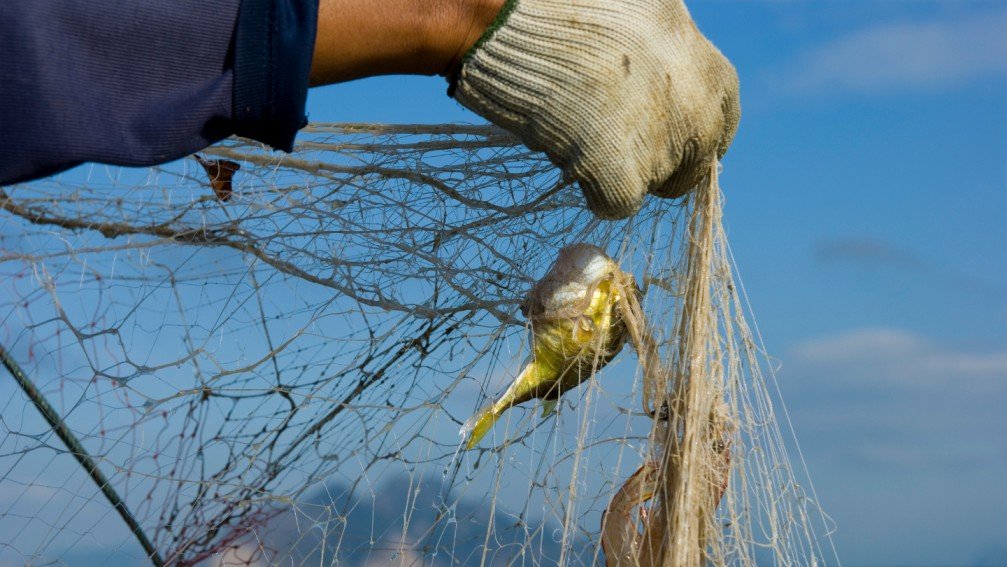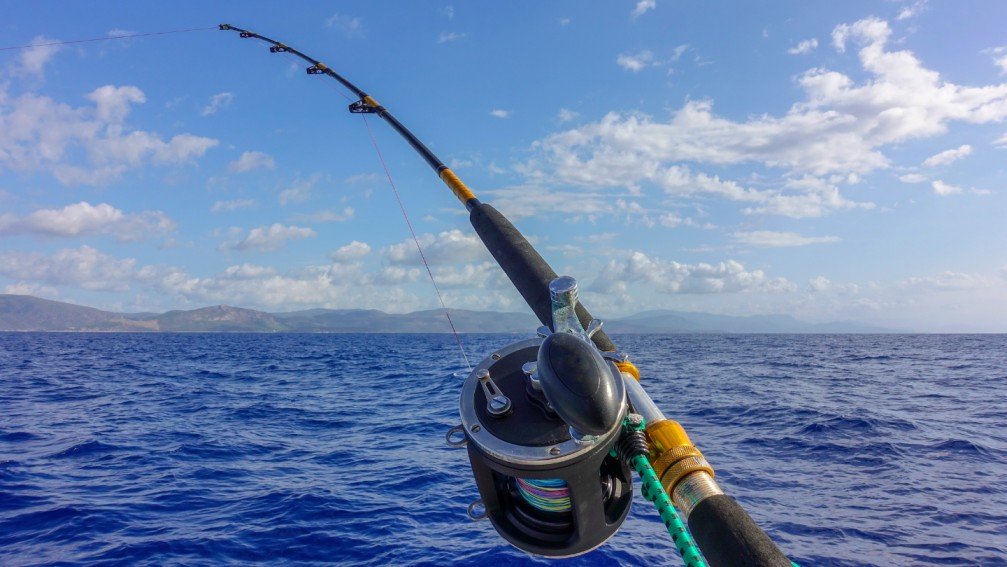To release a fish, gently remove the hook and place the fish back into the water. Ensure the fish is upright and can swim away.
Releasing a fish properly is crucial for its survival and the health of aquatic ecosystems. Anglers must handle fish with care to reduce stress and injury. Use wet hands or gloves to prevent removing the fish’s protective slime layer. Avoid keeping the fish out of the water for too long.
Tools like pliers can help to quickly and safely remove the hook. Supporting the fish in the water until it regains strength ensures it can swim away effectively. Practicing proper catch-and-release techniques helps maintain fish populations and promotes sustainable fishing practices.

Credit: fishingbooker.com
Importance Of Ethical Angling
The importance of ethical angling cannot be overstated. Ethical angling means releasing fish safely back into their habitat. This practice supports the health of aquatic ecosystems. It ensures that fish populations remain sustainable for future generations. Understanding how to release a fish properly is crucial. Let’s explore why ethical angling is so important.
Why It Matters
Ethical angling shows respect for the environment. It helps keep fish populations healthy and balanced. This balance supports a diverse ecosystem. It also provides recreational opportunities for many people. Ethical anglers care about the welfare of fish. They know that each fish is a valuable part of the ecosystem.
Conservation Benefits
Releasing fish properly has many conservation benefits. It helps maintain fish populations. It also ensures genetic diversity. This diversity makes fish populations more resilient. A healthy fish population supports other wildlife. Birds, mammals, and other aquatic species depend on fish as a food source.
Ethical angling practices also protect endangered species. By following guidelines, anglers can avoid harming vulnerable fish. This helps protect these species from extinction. Conservation efforts benefit everyone. Future generations can enjoy the same fishing opportunities we have today.
| Benefit | Description |
|---|---|
| Population Health | Maintains balanced and healthy fish populations. |
| Genetic Diversity | Ensures a resilient and diverse fish population. |
| Wildlife Support | Provides food for birds, mammals, and other species. |
| Endangered Species | Protects vulnerable species from extinction. |
Ethical angling is more than a hobby. It’s a commitment to conservation. By releasing fish properly, you help protect our natural resources. Follow these guidelines to practice ethical angling. Ensure that fish thrive in their natural habitats.

Credit: climateactiontool.org
Choosing The Right Gear
Releasing a fish safely starts with choosing the right gear. Proper gear helps avoid injury to the fish. It also ensures a quick and stress-free release. Here’s a detailed guide on the best gear to use.
Barbless Hooks
Barbless hooks are essential for safe fish release. They are easy to remove, causing less harm. You can buy barbless hooks or make your own. Simply pinch the barb down with pliers. This helps reduce the fish’s stress. It also increases their chances of survival.
Using barbless hooks offers several benefits:
- Easy hook removal
- Less damage to the fish’s mouth
- Quicker release time
Remember, always check your hooks before fishing. Make sure they are sharp and barbless. This small step helps ensure a safe release for the fish.
Proper Nets
A proper net is another key piece of gear. It should be soft and knotless. This type of net reduces injury to the fish. It also helps protect their delicate scales and fins.
| Type of Net | Material | Benefit |
|---|---|---|
| Knotless Net | Soft Mesh | Less damage to fish |
| Rubber Net | Rubber | Prevents scale loss |
Using the right net helps in several ways:
- Reduces handling time
- Minimizes stress on the fish
- Ensures a smooth release
Always wet your hands before touching the fish. This simple act helps protect their slimy coating. It’s a small step that goes a long way.
Handling Fish Safely
Handling fish safely is crucial for their survival. Proper techniques help minimize stress and injury to the fish. Let’s explore some key methods to ensure safe handling.
Wet Hands Technique
Always use the wet hands technique when handling fish. Dry hands can remove the fish’s protective slime coat. This slime coat helps protect fish from diseases and injuries.
Follow these steps:
- Dip your hands in the water before touching the fish.
- Gently cradle the fish with your wet hands.
- Avoid squeezing or gripping the fish too tightly.
Using wet hands reduces the risk of harming the fish. It ensures the fish’s slime coat remains intact.
Support The Body
Supporting the fish’s body is essential to prevent injuries. Never lift a fish by its gills, mouth, or tail alone. This can cause serious harm.
Instead, follow these steps:
- Place one hand under the fish’s belly.
- Use the other hand to support the fish’s tail.
- Lift the fish gently and steadily.
Ensure the fish remains horizontal. This helps maintain its internal organs and reduces stress.
| Do | Don’t |
|---|---|
| Use wet hands | Handle with dry hands |
| Support the body | Lift by gills or tail |
| Cradle gently | Squeeze tightly |
By following these methods, you can handle fish safely. This ensures a higher chance of survival and less stress for the fish.
Minimizing Air Exposure
Releasing a fish properly helps ensure its survival. One crucial aspect is minimizing air exposure. Fish breathe through their gills, and prolonged air exposure can be harmful. This section covers essential tips to minimize air exposure.
Quick Release Tips
- Handle the fish gently to avoid causing stress or injury.
- Keep the fish in the water as much as possible.
- Use barbless hooks to make removal faster and safer.
- Wet your hands before touching the fish to protect its slime coat.
- Have release tools ready like pliers and de-hookers.
Photographing Fish
Everyone loves to capture their catch. Here are tips to photograph fish while minimizing air exposure.
- Prepare your camera before bringing the fish out of the water.
- Keep the fish in the water until you are ready to take the photo.
- Use the buddy system: one person holds the fish, another takes the photo quickly.
- Limit air exposure to a few seconds for each shot.
- Return the fish to the water immediately after taking the photo.
Following these tips helps ensure the fish has the best chance of survival. Your efforts can make a big difference in preserving fish populations.
Removing The Hook
Releasing a fish safely involves several steps. One crucial step is removing the hook. Doing this correctly ensures the fish can swim away unharmed. Below, we’ll explore two effective methods.
Using Pliers
Pliers are helpful for removing hooks from a fish’s mouth. They give you a good grip and keep your hands safe. Here’s how you can use them:
- Hold the fish gently but firmly.
- Grip the hook with the pliers.
- Twist the hook to remove it.
Make sure to be gentle. A swift but careful motion helps the fish.
Cutting The Line
Sometimes the hook is too deep. In such cases, cutting the line is better. Follow these steps:
- Hold the fish securely.
- Use sharp scissors or a knife.
- Cut the line as close to the hook as possible.
Leaving the hook in the fish is sometimes safer. The hook will rust and fall out naturally.
Remember to always be gentle with the fish. Your goal is to release it safely.
Reviving The Fish
Releasing a fish properly ensures its survival. Reviving the fish is crucial. It helps the fish regain its strength before swimming away. Follow these steps to revive a fish effectively.
Water Movement
Keep the fish in the water. Hold it gently but firmly. Move the fish back and forth. This helps water flow through its gills. The fish needs oxygen to recover. Ensure steady and calm movements.
Tail Support
Support the fish’s tail. Use your hand or a soft net. This gives the fish balance. It also prevents unnecessary stress. Keep the fish upright. An upright position helps it breathe properly. Continue until the fish starts to swim on its own.
| Step | Action |
|---|---|
| 1 | Hold the fish gently in water |
| 2 | Move the fish back and forth |
| 3 | Support the fish’s tail |
| 4 | Keep the fish upright |
| 5 | Release when the fish swims away |
Best Practices For Catch And Release
Releasing a fish properly ensures its survival and helps maintain healthy fish populations. Follow these best practices to minimize harm to fish and support sustainable fishing.
Avoiding Deep Hooking
Deep hooking can cause serious injury to fish. Use circle hooks to reduce deep hooking incidents. These hooks are designed to catch the fish in the mouth, not the gut.
Set the hook quickly after the fish bites. This prevents the fish from swallowing the bait. Use barbless hooks or flatten the barbs on your hooks. This makes it easier to remove the hook without harming the fish.
Avoid using live bait. Live bait increases the chance of the fish swallowing the hook deeply. Artificial lures are a safer option for catch and release.
Handling In Cold Weather
Cold weather can stress fish. Minimize the time the fish spends out of the water. Use wet hands or gloves to handle the fish. This protects their slime coat, which is vital for their health.
Avoid placing the fish on cold, dry surfaces. Instead, hold them gently and support their weight. Keep the fish in the water as much as possible while removing the hook.
Revive the fish before release. Gently move the fish back and forth in the water. This helps water flow over their gills, allowing them to regain strength.
| Tip | Reason |
|---|---|
| Use circle hooks | Reduces deep hooking |
| Set the hook quickly | Prevents swallowing bait |
| Use barbless hooks | Easier hook removal |
| Minimize out-of-water time | Reduces stress |
| Use wet hands/gloves | Protects slime coat |
| Revive fish in water | Helps regain strength |
Educating Fellow Anglers
Teaching others how to release fish safely is crucial. It helps protect fish populations. Sharing knowledge can make a big difference.
Sharing Knowledge
Start by sharing what you know about proper fish release techniques. Use simple steps:
- Handle fish gently. Wet your hands first to protect their scales.
- Use barbless hooks. These make it easier to remove the hook.
- Keep fish in water. Minimize the time fish spend out of water.
- Use proper tools. Have pliers and a de-hooking tool ready.
Explain why each step is important. It helps others understand the impact.
Leading By Example
Actions speak louder than words. Show others how to release fish properly:
- Gently hold the fish with wet hands.
- Use a barbless hook to make removal easy.
- Keep the fish in the water as much as possible.
- Use proper tools to minimize harm.
Others will follow your lead. Seeing proper techniques in action reinforces learning.
Releasing a fish properly ensures its survival and maintains ecological balance. Follow these steps to minimize harm. Handle fish gently, use wet hands, and avoid prolonged air exposure. By practicing ethical fishing, you contribute to sustainable fisheries and a healthy environment.
Your efforts make a significant impact on aquatic life conservation.
FAQs:
What Is The Best Way To Release A Fish?
Gently handle the fish with wet hands. Remove the hook carefully. Keep the fish in water. Avoid squeezing. Release promptly.
Is There A Humane Way To Catch And Release Fish?
Yes, use barbless hooks, handle fish with wet hands, and release them quickly. Avoid deep hooking and keep the fish in water.
How Do You Catch And Release Fish Without Killing Them?
Handle the fish gently and wet your hands first. Use barbless hooks and remove them quickly. Avoid touching the gills. Release the fish immediately into the water. Ensure the fish is revived before letting it go.
How Do You Release Fish From A Fish Tank?
Gently scoop the fish with a net. Slowly lower the net into a container of tank water. Gradually acclimate the fish to new water. Release the fish carefully to avoid stress or injury. Always handle fish with wet hands to protect their slime coat.



